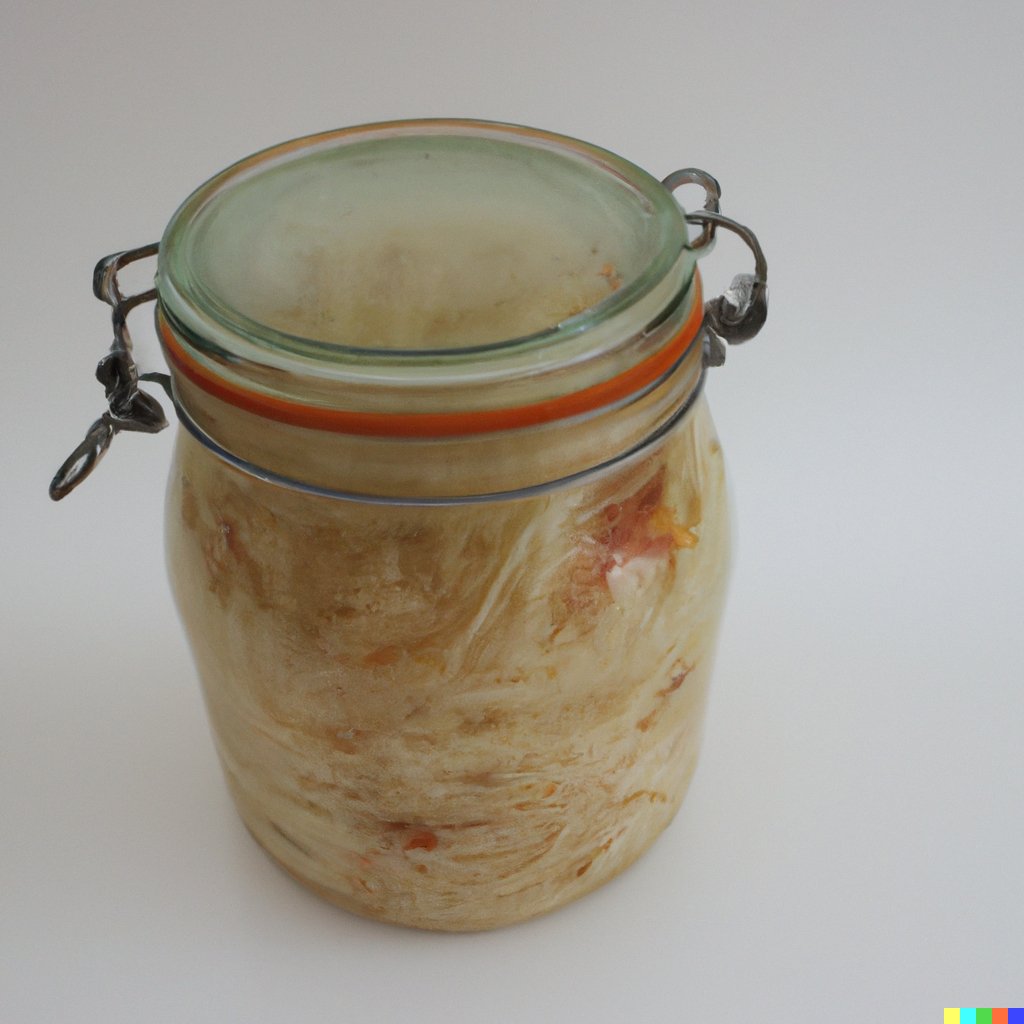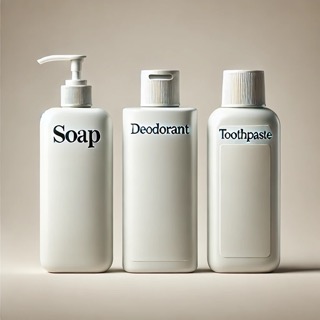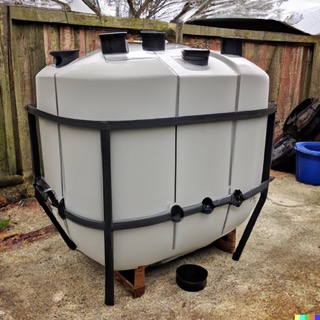
Food waste is a significant global concern, with tons of edible food discarded every year. Adopting natural and eco-friendly food preservation methods can help reduce waste and extend the shelf life of perishable items. Here are some effective ways to naturally conserve food:
Preserving Food Naturally Benefits
The perks of preserving food by natural means are vast! It encourages good health, boosts food security, conserves resources, and saves cash. All these benefits are great for individuals and the environment alike.
Overview of how these products work together for conserving food
here's a practical breakdown of how to use each conservation product fit into ones various food preservation methods:
1. Glass Storage Containers (ComSaf 3-Piece & Mason Jars)
- Preserving Method: These containers are ideal for dry storage and canning. They are airtight, making them suitable for keeping dry foods (e.g., grains, beans) fresh. The wide-mouth mason jars, with their airtight and silicone-sealed lids, are excellent for fermenting foods like pickles and sauerkraut. They can also be used for traditional canning, preserving fruits, and making jams or sauces.
- Use: Store dried or fermented food after dehydration, vacuum sealing, or other preservation techniques.
*As an Amazon Associate, I earn commission from qualifying purchases made through links in this post.*
ComSaf 3-Piece Glass Clear Storage Container | Square | 78oz | Airtight, Lids, Wire Clip Fastening | Canister Set | Food Storage, Preserving, Canning, Kitchen - Price: 26.45$ - https://amzn.to/3CbXItt
2 Glass Mason Jars (Clear) | 1 Gallon | Wide Mouth | Airtight Lids | Silicone | Fermenting, Canning, Preserving | Hinged - Price: 43.55$ - https://amzn.to/3YtPHrh
2. Dehydrator (Magic Mill Food Dehydrator Machine)
- Preserving Method: The dehydrator removes moisture from food, which helps preserve fruits, vegetables, meats (jerky), and even herbs. Dehydrated food is shelf-stable and has an extended lifespan without refrigeration.
- Use: Dehydrate fruits like apples, or meats like beef, then store them in the airtight containers or vacuum-seal bags to maintain their quality.
Magic Mill Food Dehydrator Machine | 5 Stackable Stainless Steel Trays Jerky Dryer with Digital Adjustable Timer & Temperature Control - Electric Food Preserver for Fruits, Veggies, Meats & Dog Treats - Price: 59.99$ - https://amzn.to/3C9FpFe
3. Vacuum Sealer (NutriChef PKVS)
- Preserving Method: Vacuum sealing removes air from the storage bags, preventing oxidation and prolonging the freshness of both dry and moist foods. This method is particularly effective for long-term freezing and storing dehydrated items.
- Use: After dehydrating food, vacuum-seal it for added protection. You can also vacuum-seal fresh food before freezing to extend its shelf life without freezer burn.
NutriChef PKVS Sealer - Automatic Vacuum Air Sealing Food Preservation System w/Starter Kit - Compact Design, Lab Tested, Dry and Moist Food Preserve Modes, Led Indicator Lights, 12", Silver - Price: 59.99$ - https://amzn.to/4f9QNQ4
4. Bee's Wrap (Beeswax Wraps)
- Preserving Method: These reusable beeswax wraps are a sustainable alternative to plastic wraps, ideal for short-term food preservation. They work well for wrapping fresh vegetables, bread, cheese, and fruits.
- Use: Wrap fresh items that don’t need long-term storage (e.g., bread, partially used vegetables) before placing them in the refrigerator or pantry.
Bee's Wrap Reusable Beeswax Food Wraps Made in the USA, Eco Friendly Beeswax Wraps for Food, Sustainable Food Storage Containers, Organic Cotton Food Wrap, XXL Cut To Size Wax Paper Roll, Honeycomb - Price: 24.99$ - https://amzn.to/4hqzTOH
5. Smoker (Masterbuilt® 30-inch Digital Electric Smoker)
- Preserving Method: Smoking adds flavor while preserving food, particularly meats and fish, by curing them with heat and smoke. This method, especially with an electric smoker, allows for precise control over the temperature and duration.
- Use: Smoke meats or fish and then store them in vacuum-sealed bags or airtight jars for long-term preservation or in bee wraps for short-term use.
Masterbuilt® 30-inch Digital Electric Vertical BBQ Smoker with Leg Kit, Side Wood Chip Loader and 710 Cooking Square Inches in Black, Model MB20070421- Price: 279.99$ - https://amzn.to/4edT7nI
here are a few additional items or methods you might consider:
Freezer Bags:
While you already have vacuum sealing, having heavy-duty freezer bags can be a simple and effective option for storing food like soups or pre-prepared meals. Not all foods need to be vacuum-sealed.
Amazon Basics Reclosable Freezer Quart Bags, Stand & Fill Base, 120 Count - Price: 7.46$ - https://amzn.to/4htPjle
Ziploc 1 Gallon Food Storage Bags, Stay Open Design with Stand-Up Bottom, Easy to Fill, 150 Bags Total - Price: 22.60$ - https://amzn.to/4f6JaKh
Fermentation Crock or Kit:
Optimally wide-mouth jars for fermenting, a fermentation crock or a more specialized kit might give you more control over the process, especially for larger batches of fermented foods like kimchi or sauerkraut.
Kenley Ceramic Brown Fermentation Crock | 1/2 Gallon, 2 Liter | Lid, Weights, Pounder | Stoneware Pickle Pot - Price: 44.89$ - https://amzn.to/4f7BqYv
Seeutek Fermentation Crock Jar 10 Liter / 2.6 Gallon - Stoneware Pot for Fermenting, Pickling Kimchi, Pickles, Vegetables, Kombucha - Glazed Ceramics Fermenter with Stone Weights, Lid - Price: 89.99$ - https://amzn.to/4f48CA3
Masontops 9 Piece Acacia Wood Fermentation Kit | Pickle Kit, Sauerkraut Making Kit, Kimchi Container | Fermentation Airlock Lids, Fermentation Weights, Tamper | Small Mouth - Price: 54.99$ - https://amzn.to/40tYOLd
Canning kit. Complete DIY fermentation kit for wide mouth mason jars or pickling jars for 7 sets. Glass weights, tamper, airlock lids, and recipe included. - Price: 39.99$ -https://amzn.to/3C9F1GM
Canning Equipment:
If you plan on doing a lot of canning, a pressure canner (not just a water bath canner) is essential for safely preserving low-acid foods like vegetables, meats, or soups. The jars you have are perfect for this, but having a pressure canner expands the types of foods you can safely preserve.
M11 Mason Jar Vacuum Sealer - Electric Mason Jar Vacuum Sealer Kit with Wide and Regular Mouth Mason Lids, Jar Vacuum Sealer for Canning Jars, Vacuum Sealing Machine for Food Storage - Price: 39.99$ - https://amzn.to/4htPddm
Canning Supplies Starter Kit, Stainless Steel Canning Set Tools: Rack, Ladle, Measuring Spoons, Funnel, Tongs, Jar Lifter, Lid Lifter & Accessories for Canner/Pot, Beginner, Home Canning Kit - Black - Price: 27.99$ - https://amzn.to/3NOp5w9
Canning Pot with Rack and full Set + ½ Pint ladle Measuring Cups - Supplies Kit for Beginner, Food Grade Stainless Steel Accessories Starter - Price: 125.99$ -https://amzn.to/3UxIDbP
Silica Gel Packs:
For long-term storage of dried goods (like rice, beans, or even dehydrated foods), placing a small silica gel pack inside airtight jars or containers helps absorb any residual moisture and keeps your food fresher for longer.
55 Pcs 5 Gram Silica Gel Packs, Transparent Desiccant, Desiccant Packets for Storage, Moisture Packs for Spices Jewelry Shoes Boxes Electronics Storage - Price: 9.99$ - https://amzn.to/4fu3NQc
wisedry Silica Gel Flower Drying Crystals - 5 LBS, Color Indicating, Reusable - Price: 32.99$ - https://amzn.to/3C4S9wK
Pickling Supplies:
If you’re into pickling, adding pickling salts and pickling spice mixes to your arsenal can allow for more experimentation with flavors and preservation techniques.
Mrs. Wages Pickle Mix, Xtra Crunch, Easy-To-Use, Fast Results, Great Taste & Crispness, Ensures Crunchiness, 5.5 oz Jar (Pack of 1) - Price: 11.81$ - https://amzn.to/3AvZWmP
Frontier Co-op Organic Pickling Spice 1lb - Price: 20.66$ - https://amzn.to/3YtckMs
Pickling & Canning Salt, Pickling Salt & Curing Salt for Natural Preserving, Fine Sea Salt & Kosher Salt for Brining, Non-Iodized Salt, 14 oz Bag, Sea Salt Superstore - Price: 7.99$ -https://amzn.to/4ejgJYs
Temperature and Humidity Control:
If you're serious about food storage, especially for drying, fermenting, and smoking, maintaining consistent temperature and humidity levels in your storage area is crucial. This can help avoid spoilage due to mold or bacteria growth in certain foods.
ThermoPro TP50 Digital Hygrometer Indoor Thermometer Room Thermometer and Humidity Gauge with Temperature Monitor - Price: 13.99$ - https://amzn.to/4ebaUw1
ThermoPro TP49 Digital Hygrometer Indoor Thermometer Humidity Meter Room Thermometer with Temperature and Humidity Monitor Mini Hygrometer Thermometer - Price: 11.99$ - https://amzn.to/3Useevt
How They Work Together:
- Dehydration and smoking can be used for long-term preservation of meats and vegetables. After processing, the food can be vacuum-sealed or stored in airtight jars.
- For shorter-term storage or sustainability, the bee’s wrap is a natural, reusable option.
- Vacuum sealing and airtight jars provide airtight environments that help further extend the shelf life of dehydrated or smoked foods.
Together, these products offer a comprehensive approach to food conservation, suitable for both short-term freshness and long-term preservation.
Canning and Jarring
Preserving food for a long time is easy with canning and jarring! This method seals food in glass jars with airtight lids. Oxygen is removed, stopping bacteria and fungi growth. This helps keep the food fresh and tasty.
Here are the benefits of canning and jarring:
| Benefits | Canning and Jarring |
|---|---|
| Long shelf life | Yes |
| Retains freshness | Yes |
| Preserves nutrients | Yes |
| Prevents bacterial growth | Yes |
| Suitable for various foods | Yes |
Canning and jarring have more advantages. You don't need to refrigerate the sealed jars. So, you save space and energy! It's an eco-friendly alternative to plastic containers and disposable packaging.
Pro Tip: Sterilize your jars before sealing them. This will help make your food last longer.
Do you want to live more sustainable? Start fermenting excess food and save food waste.
Drying and Dehydrating
Preserving food naturally involves removing moisture, which stops the growth of microorganisms. You can dehydrate fruits, veggies, and herbs with a machine or even by air-drying and sun drying.
Take a look at the different ways to dry and dehydrate:
- Dehydrator: Uses a machine to remove moisture.
- Air-drying: Letting food dry in the open air.
- Sun drying: Exposing food to sunlight to remove moisture.
This technique keeps the food's nutritional value while increasing its shelf life. Plus, dried food doesn't need refrigeration and is easy to store.
Fun Fact: Dehydrating fruits makes their flavors more intense and increases their natural sweetness.
Freezing
Freezing is an eco-friendly preservation method. It has many benefits, such as:
- Extending the shelf life of food
- Allowing for long-term storage
- Retaining nutritional value
- Reducing food waste
You can also prepare larger amounts of meals and freeze them for later use.
One advantage of freezing is that it is suitable for outside winter storage. This is particularly useful in colder climates, where the freezing temperatures can be used for storage during the winter months.
A friend once told me about preserving tomatoes through freezing. They skinned and sliced the ripe tomatoes, then froze them individually on a baking sheet before transferring them into freezer-safe bags. This allowed them to enjoy summer tomatoes even during winter when fresh produce was scarce.
Why settle for cling wrap? Beeswax wraps are eco-friendly and fashionable. They can keep your food fresh and help you save the environment.
Beeswax Wraps:
Beeswax wraps are an eco-friendly alternative to plastic wrap for preserving fresh produce and covering containers. The warmth of your hands molds the wrap around the food, creating a breathable seal.
Preserve fresh produce or cover containers with these wraps. Cleaning with mild soap and cold water is easy, and they can be reused and are biodegradable. Plus, they come in various sizes to fit different types of food items or containers.
Pro Tip: Avoid using them with raw meat or hot dishes, as high temperatures can damage the wax coating.
Pickling
Pickling involves preserving food in a solution of vinegar, salt, and spices. Pickled vegetables, fruits, and even eggs can be stored for months and add a tangy flavor to dishes. You can reuse old glass jars for maximum sustainability.
Salt-Curing
Salt-curing is a traditional way to preserve food. It extracts moisture, preventing bacteria growth and extending shelf life. Plus, it adds flavor and keeps texture.
For optimal results, use the right salt-curing ratio on your food!
Salt-curing is also known as salting is commonly used for preserving fish and meats.
If your food needs help quitting smoking, try a natural nicotine patch. Enjoy some BBQ ribs instead!
Smoking
Discover the unique art of smoking food! It enhances the taste without the need for chemicals or preservatives.Smoking is a traditional preservation method that imparts flavor and dries out the food, making it less susceptible to spoilage. It is often used for meats, fish, and cheeses. Follow these tips for a successful smoke:
- Use a smoker with temp control and ventilation.
- Choose the right wood chips for flavor.
- Brine or marinate meats before smoking.
- Monitor the internal temp with a meat thermometer.
Understand the science behind this preservation method and get smokin'!
Root Cellaring:
Root cellaring is a natural storage method that utilizes the cool and consistent temperatures found in cellars or underground spaces. It is ideal for preserving root vegetables and some fruits.
Fermentation
Fermentation is a great way to extend shelf-life and add delicious flavour to food. The table below shows some popular fermented foods and how fermentation can be used to preserve them:
| Food | Fermentation Technique | Shelf Life Extension |
|---|---|---|
| Sauerkraut | Lacto-fermentation | Several months |
| Kimchi | Spontaneous fermentation | Up to a year |
| Yogurt | Bacterial fermentation (Lactic acid bacteria) | Several weeks |
These foods not only taste great, but they also offer unique health benefits. They are packed with beneficial gut bacteria that can help with digestion and overall gut health.
Surprisingly, fermentation as a preservation method has been around for thousands of years. It is an ancient technique used by many cultures across the world. This traditional practice is still widely used today due to its numerous advantages.
Vinegar and oil infusions are another great way to preserve food. It's like marinating your groceries in a spa treatment - and you'll save money too!
Vinegar and Oil Infusions
Infusing herbs, fruits, vinegar, and oil creates yummy liquids that can be used in cooking and salad dressings. This method extends the shelf life of ingredients. You can make unique flavor combos - like apple cider vinegar with basil-infused olive oil, raspberry vinegar with garlic-infused sunflower oil, or balsamic vinegar with lemon-infused avocado oil.
Infusing enhances flavors and acts as a preservative. You can tailor the flavors to your liking, experimenting with different herbs, fruits, and oils. These infusions also make great homemade gifts.
Fun fact: Ancient China used oil preservation as a way to store food during times of scarcity. Natural preservation benefits the environment - plus, you get to hoard Mason jars!
Frequently Asked Questions (FAQs) - How to Naturally Conserve Food
Q1: What is natural food conservation?
A1: Natural food conservation refers to using eco-friendly methods to extend the shelf life of perishable foods without relying on artificial preservatives.
Q2: How does canning and jarring preserve food?
A2: Canning and jarring involve sealing food in glass jars with airtight lids to prevent bacterial growth and preserve fruits, vegetables, and sauces.
Q3: What is the process of drying and dehydrating food?
A3: Drying and dehydrating involve removing moisture from food, inhibiting the growth of microorganisms and preserving fruits, vegetables, and herbs.
Q4: Can you freeze a wide range of foods?
A4: Yes, freezing is an effective preservation method for various foods, including meat, fruits, vegetables, and baked goods.
Q5: How does fermentation preserve food?
A5: Fermentation uses beneficial bacteria to convert sugars in food into acids or alcohol, extending the shelf life of fermented foods like sauerkraut and yogurt.
Q6: What foods can be pickled?
A6: Pickling is suitable for preserving vegetables, fruits, and even eggs, using a solution of vinegar, salt, and spices.
Q7: What is salt-curing, and which foods can be preserved this way?
A7: Salt-curing involves covering food with salt to draw out moisture and inhibit bacterial growth. It is commonly used for preserving fish and meats.
Q8: How does smoking preserve food?
A8: Smoking dries out the food and imparts flavor, making it less susceptible to spoilage. Meats, fish, and cheeses are commonly preserved through smoking.
Q9: What is root cellaring, and which foods are ideal for this method?
A9: Root cellaring involves storing food in cool and consistent temperatures found in cellars or underground spaces. Root vegetables and some fruits are ideal for this method.
Q10: How are beeswax wraps used for food preservation?
A10: Beeswax wraps are an eco-friendly alternative to plastic wrap. They mold around fresh produce and containers, creating a breathable seal for food preservation.
Conclusion
By embracing natural and eco-friendly food preservation methods, we can significantly reduce food waste and contribute to a more sustainable lifestyle. Whether canning, dehydrating, fermenting, or pickling, these preservation techniques not only extend the shelf life of food but also add unique flavors and health benefits to our diets. By incorporating these methods into our culinary practices, we can take meaningful steps toward a greener and more resource-conscious future.







.jpeg)



_water_filter_system2.jpg)


